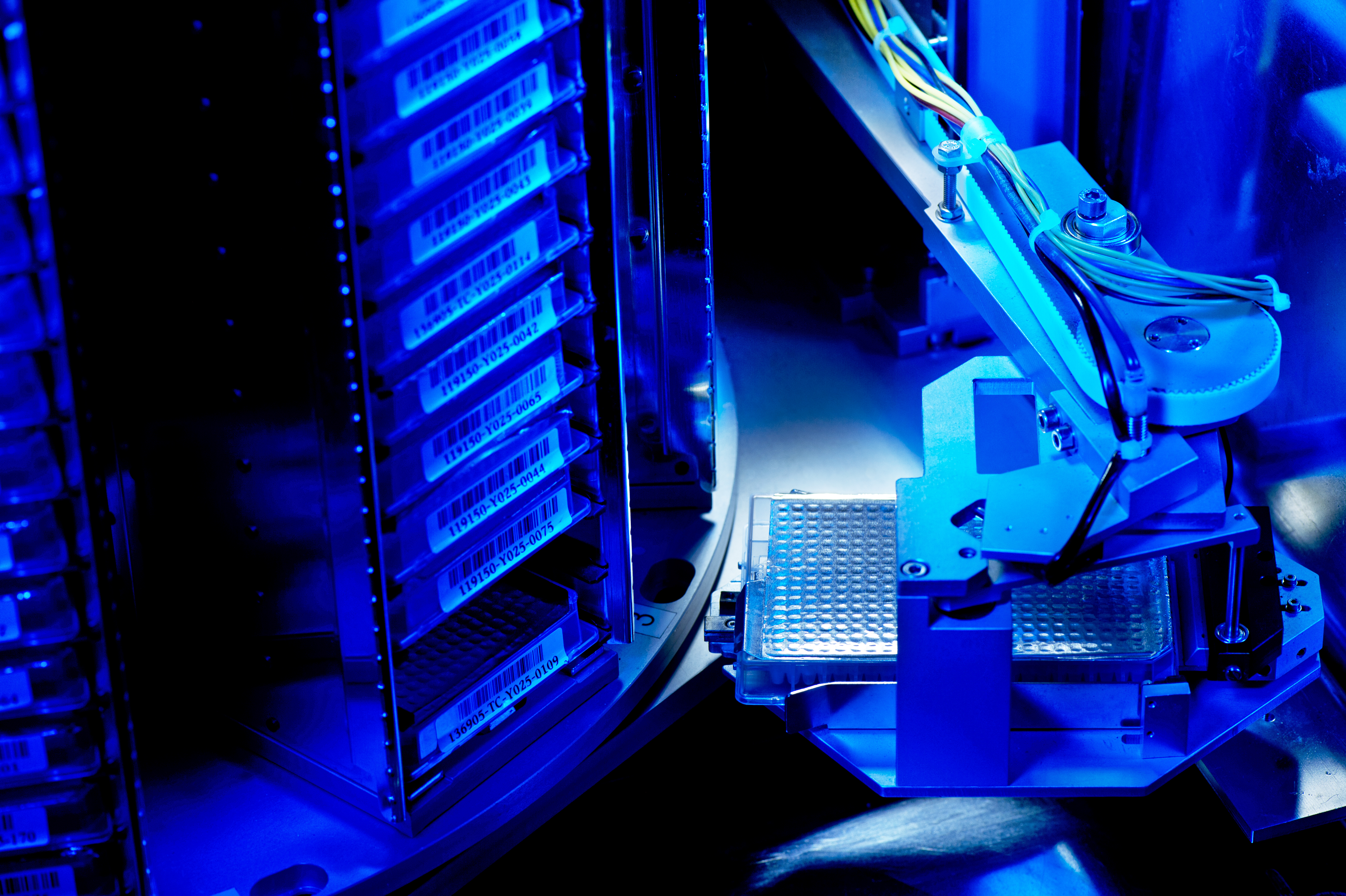The research division Drug Discovery is divided into the departments Drug Discovery at the Frankfurt am Main, Hamburg and Berlin sites and High Resolution and Automated Microscopy at the Göttingen site. The Drug Discovery department at the Frankfurt am Main and Hamburg sites comprises several working groups.
Drug Discovery - Frankfurt am Main and Hamburg
Discovery Research – ScreeningPort
(Head: Dr. Philip Gribbon, Hamburg)
The expertise of the working group lies in high-throughput biology, such as the development of automated biological test systems and high-throughput screening for new pharmacologically active substances, also using automated imaging techniques. Other areas of focus include the repositioning of known compounds for new indications and the development and application of innovative stem cell technologies for testing the efficacy and safety of drug candidates.
Pharmaceutical Chemistry
(Head: Prof. Dr. Dieter Steinhilber, Frankfurt am Main)
The group focuses on chemical synthesis, structural optimization and pharmacological characterization of lead compounds at the molecular and cellular level, in combination with in silico methods for the identification and design of new drugs (ligand and target protein-based virtual screening, quantitative structure-activity models).
Biotherapeutic Drug Development and Protein Engineering
(Head: Dr. Schara Safarian, Frankfurt am Main)
The LYCRA research group is part of the Fraunhofer ATTRACT program and focusses on the development, characterization and validation of biotherapeutic drugs that facilitate clearance of target proteins via cellular quality control mechanisms. LYCRA aims at designing novel therapeutic modalities with a novel mode of action in order to address disease-associated target proteins considered as undruggable. Moreover, our versatile technology is well adaptable to address a wide range of diseases such as immune-mediated disorders and various forms of cancer.
Biomedical Data Science
(Head: Prof. Dr. Carsten Claussen, Gesa Witt, Hamburg)
The working group is concerned with the analysis of large data sets, the integration of data from different types of experiments and studies, and the preparation, processing and storage of data according to the FAIR principles (findable, accessible, interoperable, reusable). In addition, drug discovery programs are supported using chemo- and bioinformatics methods and binding simulations.
High-resolution and automated microscopy – Göttingen
(Head: Prof. Dr. Stefan Jakobs, Göttingen)
The research group uses high- and super-resolution microscopy techniques to visualize sub-cellular structures on the nanoscale. The automation of these techniques and innovative image analysis algorithms allow the investigation of the influence of pharmacologically active substances on the nanostructure of (living) cells with high throughput.
Drug Discovery and Solution Discovery– Berlin
(Head: Dr. Jörg Scheffel, Berlin)
At the Berlin site, pioneering primary cell culture models and ex vivo skin models are developed that can be used for drug screening and validation of new active substances. The focus area Solution Discovery deals with the research, development, validation and implementation of novel compounds and concepts for tailored therapies, especially for mast cell mediated diseases.
 Fraunhofer Institute for Translational Medicine and Pharmacology ITMP
Fraunhofer Institute for Translational Medicine and Pharmacology ITMP 